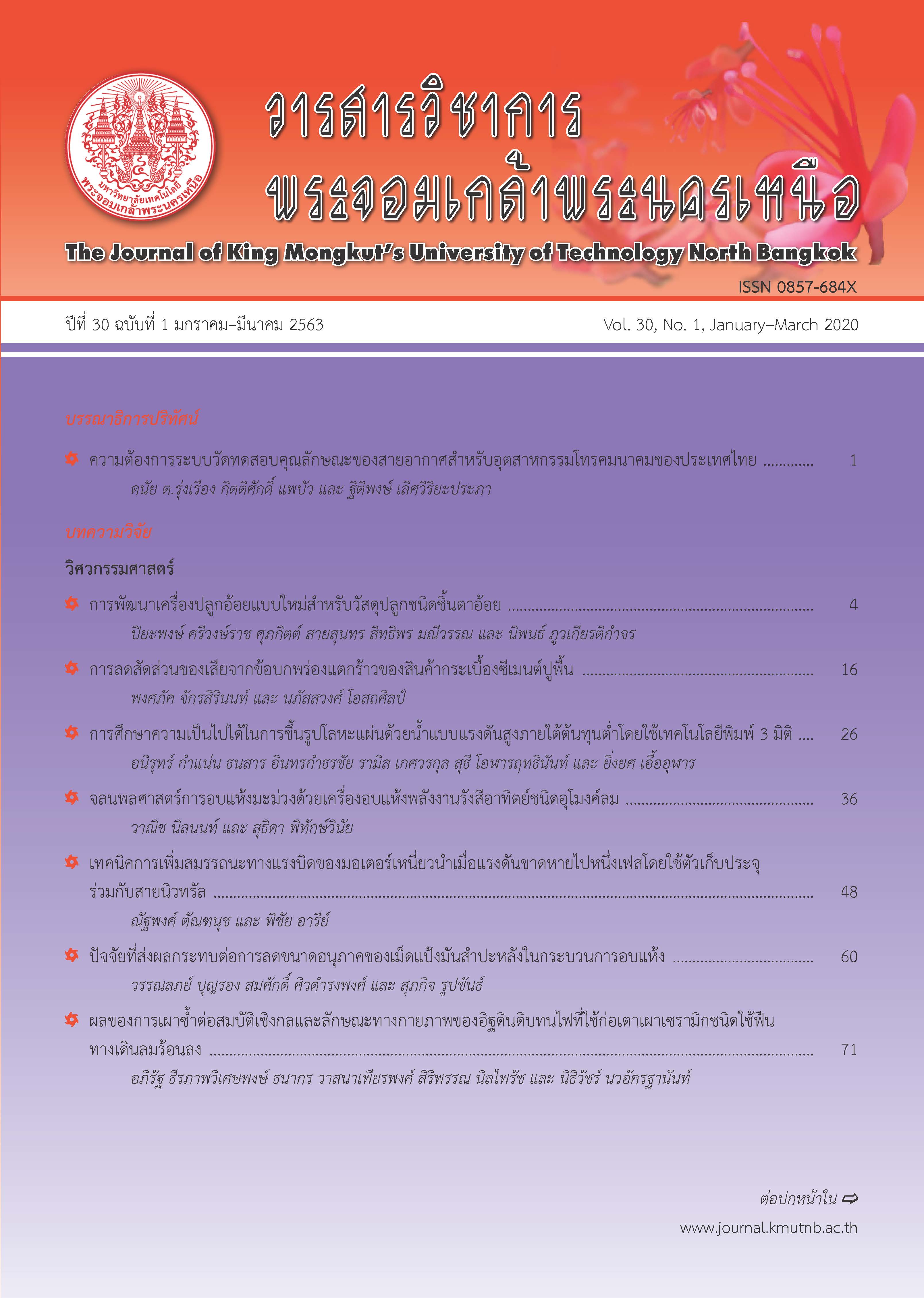Effect of Repeated Firings on Mechanical and Physical Properties of Unfired Refractory Clay Brick Used as Downdraft Wood Fired Kiln Structure
Main Article Content
Abstract
A downdraft wood fired kiln for local pottery production are usually made of unfired refractory clay bricks found various area. When unfired clay bricks as a kiln structure were heated in the first operation, the broken problem usually be found. The organic matter and structural water in the brick were removed between firing, consequently, gave the fired body with weak porous structure. Furthermore, the maximum firing temperature is not high enough to reach the sintering process and the thickness of the brick gives high temperature gradient inside the brick body. The knowledge of microstructure developed by heat transfer from the surface into the body of the brick, which was subjected to fire under real operation condition from green body, will fulfill the development of unfired refractory clay brick to extend the lifetimes of the kiln. The aim of this work is to study the difference of the compressive strength and physical characterization of the brick after fired under real conditions. The brick samples were prepared from the mixture of Mae Rim pottery clay, sand, and rice husk by using the same formula to the common unfired refractory clay brick. The samples were then fired up to 3 times in a downdraft wood fired kiln with common firing schedule for pottery product. The results found that the maximum measured temperature inside the kiln was 620°C. The average compressive strengths of the brick samples after fired in the first and second time was decreased by 42.47%. In contrast the higher average compressive strength was obtained from the third firing bricks which increased by 27.73% compare to the first firing. This increased strength is correlated with the reduction of the black core area and disappearing of microcline crystalline phase to form vitreous phase inside of the brick body.
Article Details
The articles published are the opinion of the author only. The author is responsible for any legal consequences. That may arise from that article.
References
[2] N. Nawaukkaratharnant, “Development of refractory brick for the dragon kiln,” Metallurgy and Materials Science Research Institute, Chulalongkorn University, Ratchaburi Technical College, 2019 (in Thai).
[3] S. Nilpairach, A. Watchaikun, K. Panyawatcharakom, T. Wasanapiarnpong, and N. Jiraborvornpongsa, “Effect of aluminum hydroxide addition on properties of fired refractory clay brick,” Key Engineering Materials, vol. 766, pp. 300–304, 2018.
[4] L. Sathitpanawong and A. Krajangyao, “Development refractory brick 1,300 degrees celsius from local clay,” Srinakharinwirot University (Journal of Science and Technology), vol. 4, pp. 112–121, 2012.
[5] A. Theerapapvisetpong and S. Nilpairach, “Development of low water absorption terracotta roof tile from local pottery clay and soda lime glass cullet,” The Journal of King Mongkut's University of Technology North Bangkok, vol. 29, no. 2, pp. 314–320, 2019.
[6] D. Njoya, F. S. Tadjuidje, E. J. A. Ndzana, A. Pountouonchi, N. Tessier-Doyen, and G. Lecomte-Nana, “Effect of flux content and heating rate on the microstructure and technological properties of Mayouom (Western-Cameroon) kaolinite clay based ceramics,” Journal of Asian Ceramic Societies, vol. 5, no. 4, pp. 422–426, 2017.
[7] M. Šveda, R. Sokolá , B. Janik, and Z. Štefunková, “Reducing CO2 emissions in the production of porous fired clay bricksks,” Materials Science, vol. 23, no. 2, pp. 139–143, 2017.
[8] E. J. Ibanga and A. D. Ahmed, “Influence of particle size and firing temperature on burnt properties of rice/clay mix,” Pacific Journal of Science and Technology, vol. 8, no. 2, pp. 267–271, 2007.
[9] R. E. Grim, Applied Clay Mineralogy. McGraw-Hill Book, 1962.

